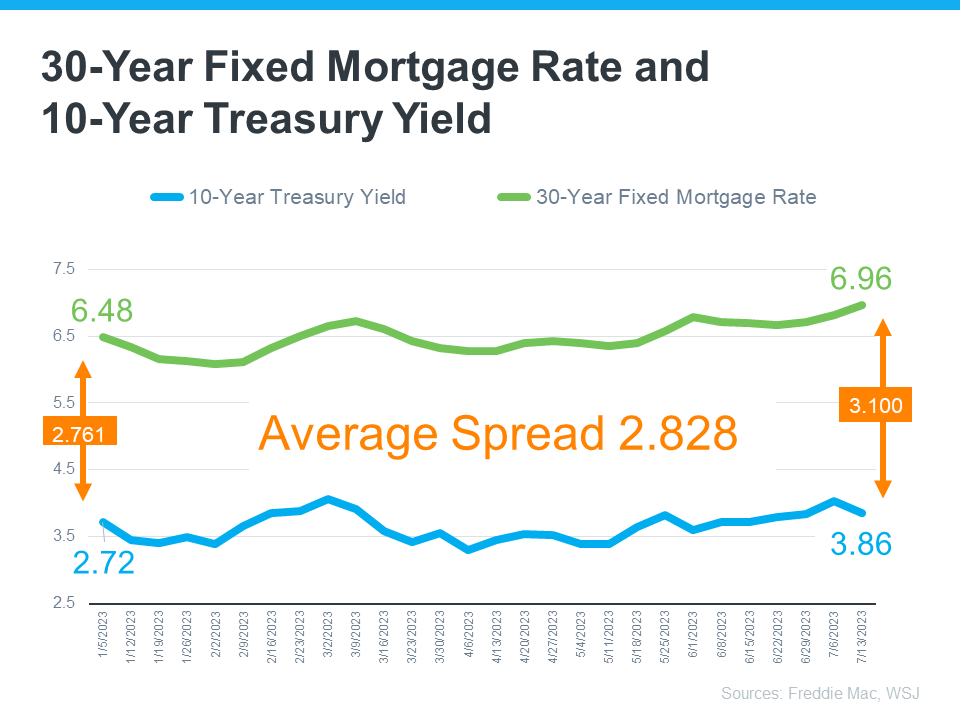Explaining Today’s Seattle Mortgage Rates
July 25, 2023
If you keep a close eye on mortgage rates because you understand their influence on your borrowing expenses, you might be curious about their future trajectory. Unfortunately, predicting mortgage rates is notoriously challenging. However, one historically reliable indicator of rate movements is the relationship between the 30-Year Mortgage Rate and the 10-Year Treasury Yield. Monitoring this relationship can provide valuable insights into the potential direction of mortgage rates.
Here’s a graph showing those two metrics since Freddie Mac started keeping mortgage rate records in 1972:
As the graph shows, historically, the average spread between the two over the last 50 years was 1.72 percentage points (also commonly referred to as 172 basis points). If you look at the trend line you can see when the Treasury Yield trends up, mortgage rates will usually respond. And, when the Yield drops, mortgage rates tend to follow. While they typically move in sync like this, the gap between the two has remained about 1.72 percentage points for quite some time. But, what’s crucial to notice is that spread is widening far beyond the norm lately (see graph below):
If you’re wondering why the spread between the 30-Year Mortgage Rate and the 10-Year Treasury Yield is surpassing its typical average, the main reason is the uncertainty prevailing in the financial markets. Various factors like inflation, other economic drivers, and decisions made by the Federal Reserve (The Fed) are all playing significant roles in influencing mortgage rates and causing the spread to widen.
Why Does This Matter for You?
This may feel overly technical and granular, but here’s why homebuyers like you should understand the spread. It means, based on the normal historical gap between the two, there’s room for mortgage rates to improve today.
And, experts think that’s what lies ahead as long as inflation continues to cool. As Odeta Kushi, Deputy Chief Economist at First American, explains:
“It’s reasonable to assume that the spread and, therefore, mortgage rates will retreat in the second half of the year if the Fed takes its foot off the monetary tightening pedal . . . However, it’s unlikely that the spread will return to its historical average of 170 basis points, as some risks are here to stay.”
Similarly, an article from Forbes says:
“Though housing market watchers expect mortgage rates to remain elevated amid ongoing economic uncertainty and the Federal Reserve’s rate-hiking war on inflation, they believe rates peaked last fall and will decline—to some degree—later this year, barring any unforeseen surprises.”
Bottom Line
Whether you’re a first-time homebuyer or a current homeowner looking to move into a home that better suits your needs, it’s crucial to stay informed about mortgage rates and expert forecasts for the upcoming months. Being aware of these developments will help you make informed decisions regarding your real estate plans and potential borrowing costs.






